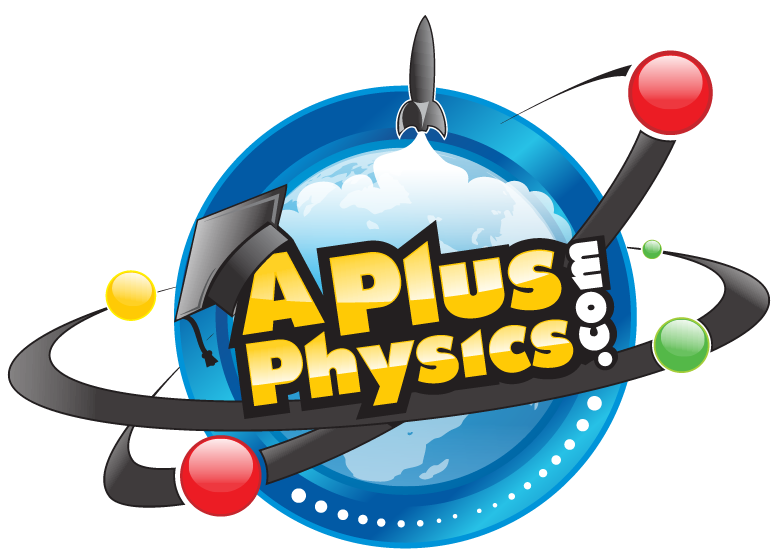-
Posts
2,778 -
Joined
-
Last visited
-
Days Won
49
Content Type
Profiles
Forums
Downloads
Blogs
Events
Store
Everything posted by FizziksGuy
-
Exactly .7 seconds after the ball is released, you don't (yet) know how far it has fallen. You could solve for the displacement of the ball after 0.7 seconds, however. If, instead, the problem had asked "how fast is the ball traveling the instant before it hits the ground," in that case you would use 4.0 meters as the displacement, but you would not know t (elapsed time).
-
The Victor Central School District in Victor, NY (a suburb of Rochester) is looking for a full-time physics teacher. Details in the link. https://www.applitrack.com/victorschools/onlineapp/default.aspx?Category=High+School+Teaching&AppliTrackJobId=1525&AppliTrackLayoutMode=detail&AppliTrackViewPosting=1
-
Hi RegentsScholar06. All of the content is still on the site, just in different places (in the Worksheets sections as well as the Community section, which wasn't available when the first book was published), and all of the videos are still available on the site, just not in Flash format, but more modern streaming formats (and also through YouTube). Unfortunately I don't see as I'll have time to perform such a significant upgrade on the site in the near future to convert the manually-developed Flash content into HTML5, an extremely significant undertaking. All the Best, Dan
-
Use your kinematic equations. Start by writing what you know (initial velocity is 0, time is 0.3 seconds, and distance traveled can be measured from the drawing). Once you know three things, you can use your kinematic equations to solve for the other two (details here: https://www.aplusphysics.com/courses/regents/videos/KinEqns_Reg/KinEqns_Reg.html)
-
Welcome to APlusPhysics Carolyn!
-
Might also consider this recent site, Strategic Option Investing.
-

NEW FILE: SimuLAB: Motion in a Circle
FizziksGuy replied to FizziksGuy's topic in Honors and Regents Physics
Hi Terry -- based on popular request of instructors I don't give out the solutions to the lab, leaving it to instructors to formulate their solutions (otherwise it becomes a much less effective tool for classroom teachers as students could just copy the answers).- 2 replies
-
- uniform circular motion
- ucm
-
(and 3 more)
Tagged with:
-
That's an initial velocity from a jump. Usain Bolt is looking at his whole body running where 12.27 m/s is a sustained speed.
-
Right, but it's ultimately a proof of 1 vs. 1, not an empirical derivation of g. You're proving something is itself if you use theoretical values.
-
Graphing the empirical k_delta_x vs. Msintheta would work, but not the theoretical. They want you to determine an empirical value for g, not do a mathematical exercise that results in a 1=1 proof.
-
See here:
-

Simple Harmonic Oscillator - Critically Damped
FizziksGuy replied to Muskkan's topic in AP Physics 1/2
I might start with a resource like this: https://opentextbc.ca/physicstestbook2/chapter/damped-harmonic-motion/ or this: https://www.toppr.com/guides/physics/oscillations/damped-simple-harmonic-motion/ -

Simple Harmonic Oscillator - Critically Damped
FizziksGuy replied to Muskkan's topic in AP Physics 1/2
Hi Muskkan. Damped oscillators are outside the scope of AP Physics 1/2, but happy to help if I can. How far have you gotten so far / where are you getting stuck? -
The one about the ice skater? Can you be more specific?
-

BOOKS: The AP Physics C Companion - Mechanics
FizziksGuy replied to FizziksGuy's topic in Announcements
Absolutely... want you to be 100% satisfied with your purchase. Refund complete.- 2 replies
-
- ap physics c
- mechanics
-
(and 2 more)
Tagged with:
-

!!Final exam!! Electric field Gauss'
FizziksGuy replied to ertugrultiyek's question in Homework Help
Hi ertugrultiyek. Sounds like a solid question. What have you tried so far? -
Hi Myua, It's in the download section -- the previous "buy" button turns to a "download" button after you complete the purchase. To save you the trouble, however, I also e-mailed you the file.
-

AP2 appendix A p 291 question 6 - charging electroscope
FizziksGuy replied to sdt99's topic in AP Physics 1/2
Connecting to ground provides an infinite supply of electrons (or can be an infinite sink of electrons). If you ground a metal rod, and hold a negative rod near an end, negative charges will be repelled from the rod into the ground. If you then disconnect the rod from the ground, no charges can enter or leave the rod, so you're left with a net positive charge on the rod. -

AP2 appendix A p 291 question 6 - charging electroscope
FizziksGuy replied to sdt99's topic in AP Physics 1/2
Page 78 in the book talks about charging by induction. This section should help you out. It doesn't matter which part of the metal rod is grounded, since it's a conductor. -
All the best to you and yours as well! Merry Christmas!
-
I would think the final pressure would be atmospheric... 🙂
-

Super new - question about downloads
FizziksGuy replied to Robin Duym's topic in Site Suggestions & Help
Hi Robin, and welcome! Your book is available in the Community --> Downloads section (from the same page where you purchase), but I've also e-mailed a copy to you for convenience. Thanks for the support! -
I don't think anyone has ever gotten this far before. Kudos, WUV Our Work!!! 😎
Terms of Use
The pages of APlusPhysics.com, Physics in Action podcasts, and other online media at this site are made available as a service to physics students, instructors, and others. Their use is encouraged and is free of charge. Teachers who wish to use materials either in a classroom demonstration format or as part of an interactive activity/lesson are granted permission (and encouraged) to do so. Linking to information on this site is allowed and encouraged, but content from APlusPhysics may not be made available elsewhere on the Internet without the author's written permission.
Copyright Notice
APlusPhysics.com, Silly Beagle Productions and Physics In Action materials are copyright protected and the author restricts their use to online usage through a live internet connection. Any downloading of files to other storage devices (hard drives, web servers, school servers, CDs, etc.) with the exception of Physics In Action podcast episodes is prohibited. The use of images, text and animations in other projects (including non-profit endeavors) is also prohibited. Requests for permission to use such material on other projects may be submitted in writing to info@aplusphysics.com. Licensing of the content of APlusPhysics.com for other uses may be considered in the future.


